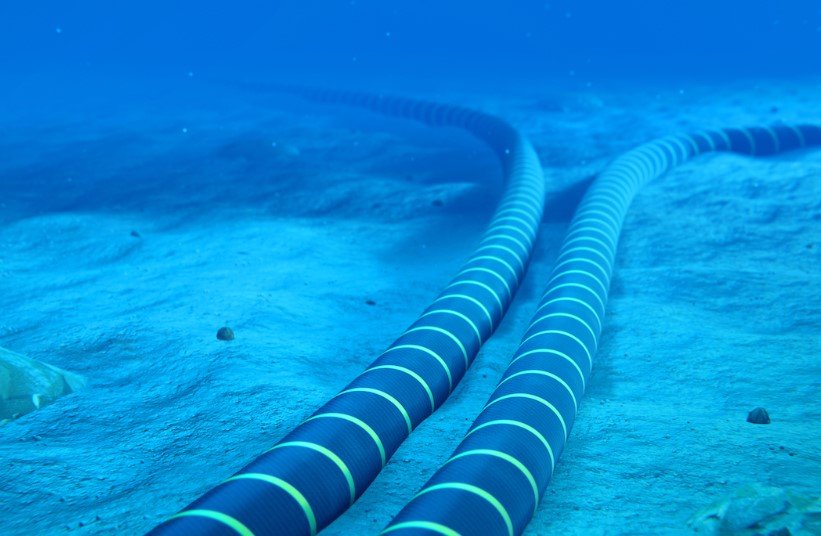Chile and tech giant Google have just signed a groundbreaking agreement to lay the first-ever submarine fiber optic cable linking South America with Asia and Oceania by 2027. This ambitious project, known as the “Humboldt Project,” promises to reshape digital connectivity in the region with faster internet speeds and improved resilience.
A Game-Changer for Connectivity in Chile and Beyond
Chile’s current internet traffic largely depends on cables connecting it to the U.S. and other continents, but this new 14,800-kilometer cable will offer a fresh route. Stretching from Valparaiso, Chile’s bustling coastal city, all the way to Sydney, Australia, via French Polynesia, the Humboldt Project is designed to diversify the digital paths available and cut down communication delays.
Foreign Minister Alberto van Klaveren emphasized at the signing ceremony in Santiago that the cable is more than just infrastructure: it’s “a bet on resilience, diversification of digital routes, and the opening up of new possibilities for international collaboration.”
The idea isn’t just to serve Google’s massive data needs. Cristian Ramos, director of telecommunications infrastructure for Latin America at Alphabet (Google’s parent company), pointed out the cable will also be open to other users, including tech companies operating within Chile. This could usher in a wave of innovation and digital growth for businesses relying on speedy, reliable internet.

Regional Ripple Effects: Argentina, Paraguay, Brazil, and More
While Chile is the primary beneficiary, the Humboldt Project is expected to bolster connectivity in neighboring countries such as Argentina, Paraguay, and Brazil. By connecting a wider swath of South America to Asia-Pacific, these nations could see a reduction in internet latency and bandwidth constraints — factors critical for industries ranging from finance to healthcare.
For countries like Paraguay and Argentina, traditionally dependent on more circuitous routes, this direct link could significantly enhance their digital infrastructure.
The undersea cable will have a staggering capacity of 144 terabytes per second. To put it simply, that’s a huge amount of data streaming seamlessly across continents, paving the way for advanced services like cloud computing, online education, and real-time video communications. And the cable’s design is expected to keep it running strong for at least 25 years.
Boosting Telemedicine and Cutting Signal Delays
Chile’s Telecommunications Minister, Juan Carlos Munoz, highlighted an exciting benefit that many might overlook — the cable’s ability to reduce signal lag. This improvement in latency is a big deal, especially in fields like telemedicine.
Imagine doctors in Santiago consulting with specialists in Sydney or even further afield without frustrating delays. Faster connections could mean quicker diagnostics, more effective remote surgeries, and better access to healthcare in Chile’s rural and remote areas.
This could be a real life-changer in a country where distances between cities and mountains sometimes complicate quick medical access.
Google’s Big Bet: Investment and Tech Ambitions
Google is reportedly investing between $300 million and $550 million in the Humboldt Project. The scale of this commitment speaks volumes about the tech giant’s belief in South America’s potential as a digital hub. The move also signals Google’s strategy to build more resilient and diversified networks that avoid over-reliance on traditional routes, which can be vulnerable to disruptions.
Last January, when the deal was first announced, it already sparked excitement among tech circles, as it showcased a rare, direct undersea cable connection from South America straight to the Asia-Pacific region.
For Google, the cable will support the vast cloud infrastructure and data services that power everything from YouTube and Google Search to enterprise services used by countless companies across the globe.
Navigating Challenges and Community Impact
However, this project isn’t without its hurdles. In recent times, Latin America has seen pushback against large tech infrastructure projects, especially new data centers, due to environmental and social concerns.
The Chilean government and Google will have to ensure that the cable’s construction and maintenance respect local ecosystems and communities. As the project unfolds, keeping a transparent dialogue with affected groups will be crucial.
How the Humboldt Project Stacks Up: Quick Facts
| Feature | Details |
|---|---|
| Length | 14,800 kilometers (9,200 miles) |
| Route | Valparaiso (Chile) → French Polynesia → Sydney (Australia) |
| Capacity | 144 terabytes per second |
| Expected Launch | By 2027 |
| Estimated Investment | $300 million to $550 million by Google |
| Lifespan | Approx. 25 years |
The Humboldt Project marks a pivotal moment in bridging digital divides and fostering closer ties between continents. For Chile and its neighbors, this cable could be the digital backbone that supports future innovation, growth, and connectivity with the fast-paced Asia-Pacific region.








